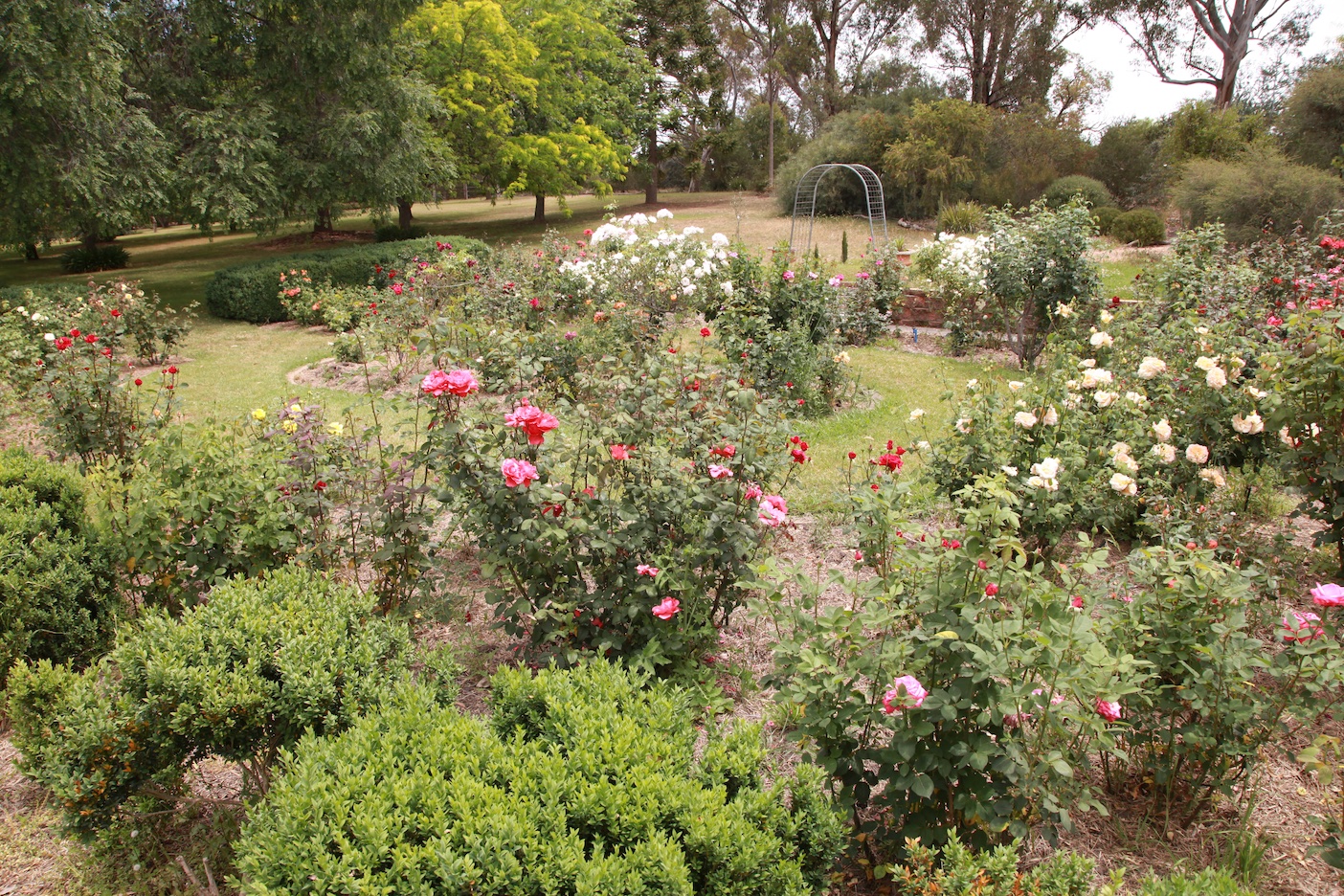“Hillgrove”, 3 Moggs Lane, Bombira.
Author: Jane Munro.
Ramble, explore and rediscover a venerable Mudgee garden.
Hillgrove, at 3 Moggs Lane, Bombira, a grand 5 acre garden, is home to new owners, Jerry Scelzi and Andrew Murray, who’ve been working to enhance the existing garden, putting their personal stamp on selected areas whilst maintaining the integrity of the original highly successful design.
Hidden behind the 600m perimeter of hedged photinias, the curved driveway leading to the house is bordered by shaped shrubs and towering trees. Winding pathways, leading through open spaces and densely planted beds, lead down-slope from the eucalypt-scented native and protea gardens to a formal rose garden, and beyond.
The rose garden contains over 100 mature, fragrant plants and is surrounded by a buxus hedge. Dotted all around are tall trees- including bunya pine, Himalayan cedar, oaks, swamp cypress, and golden elm.
Elegant sculptures and ornaments are scattered sparingly throughout.
Below the house, a watercourse cascades down to an iris-fringed pond- Jerry’s “dreaming place”. Blue wrens and honeyeaters are frequent visitors to this part of the garden.
Meticulous design work has gone into the new, formal vegetable garden, which has a perfect-north orientation. Raised beds have steel edging, designed by Jerry. There’s a bountiful variety of stone and berry fruits- nectarines, apricots, plums, peaches, raspberries, redcurrants. Arbours are adorned with climbing and tumbling fruits and flowers- kiwiberry, passionfruit, rose and clematis.
The new owners have created a more formal orchard in the north-eastern corner, and a chicken run has also been added.
Camellias, advanced maples and rhododendrons abound, and there’s a lovely maple walk, underplanted with a bank of forget-me-nots.
The native garden is centred around a row of sugar gums planted by the original owner. Birds love this place, with eastern rosellas regularly taking up temporary residence in the nest boxes. Expect to see big sweeps of bottle brushes flowering in October, along with wattles, grevilleas, melaleucas and callistemons.





